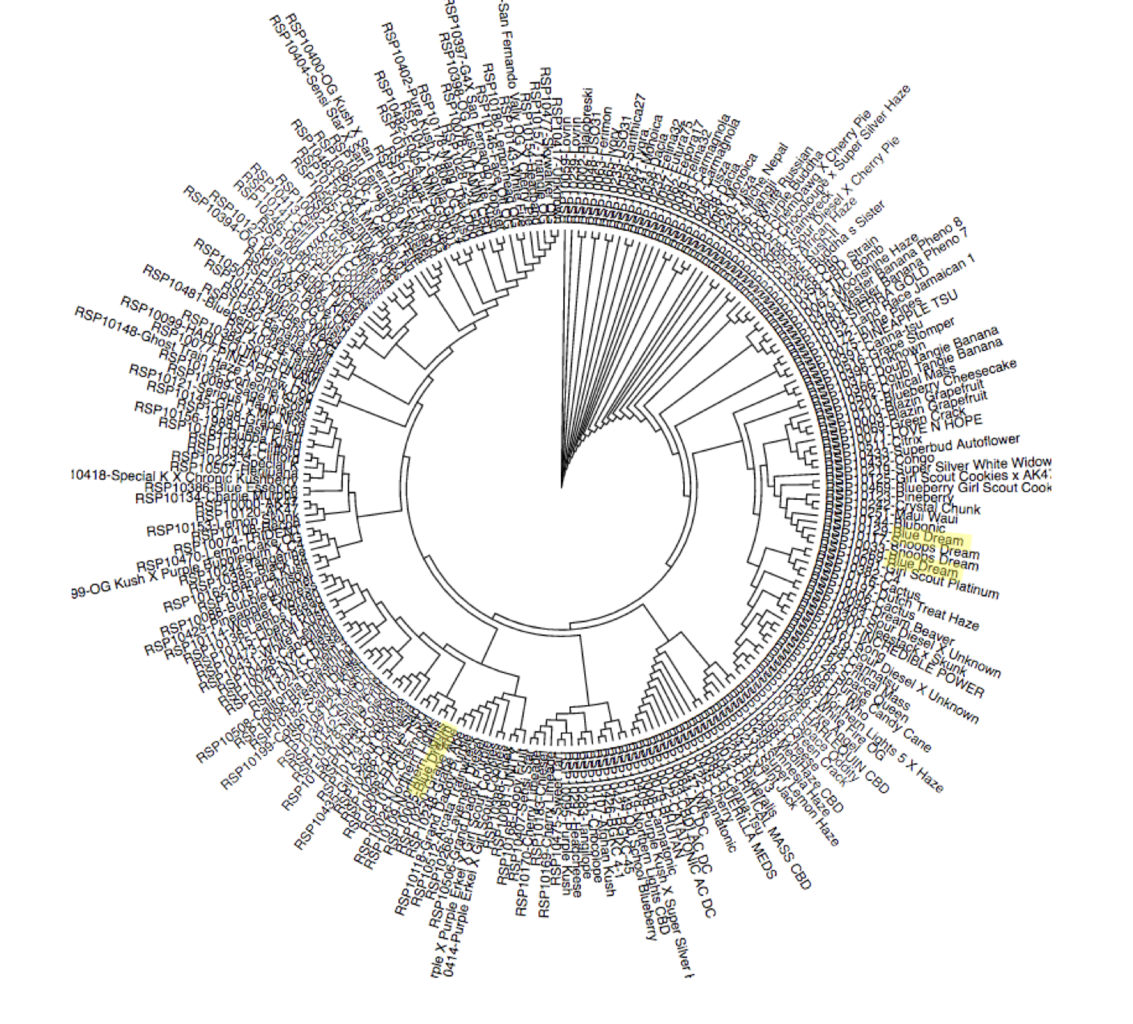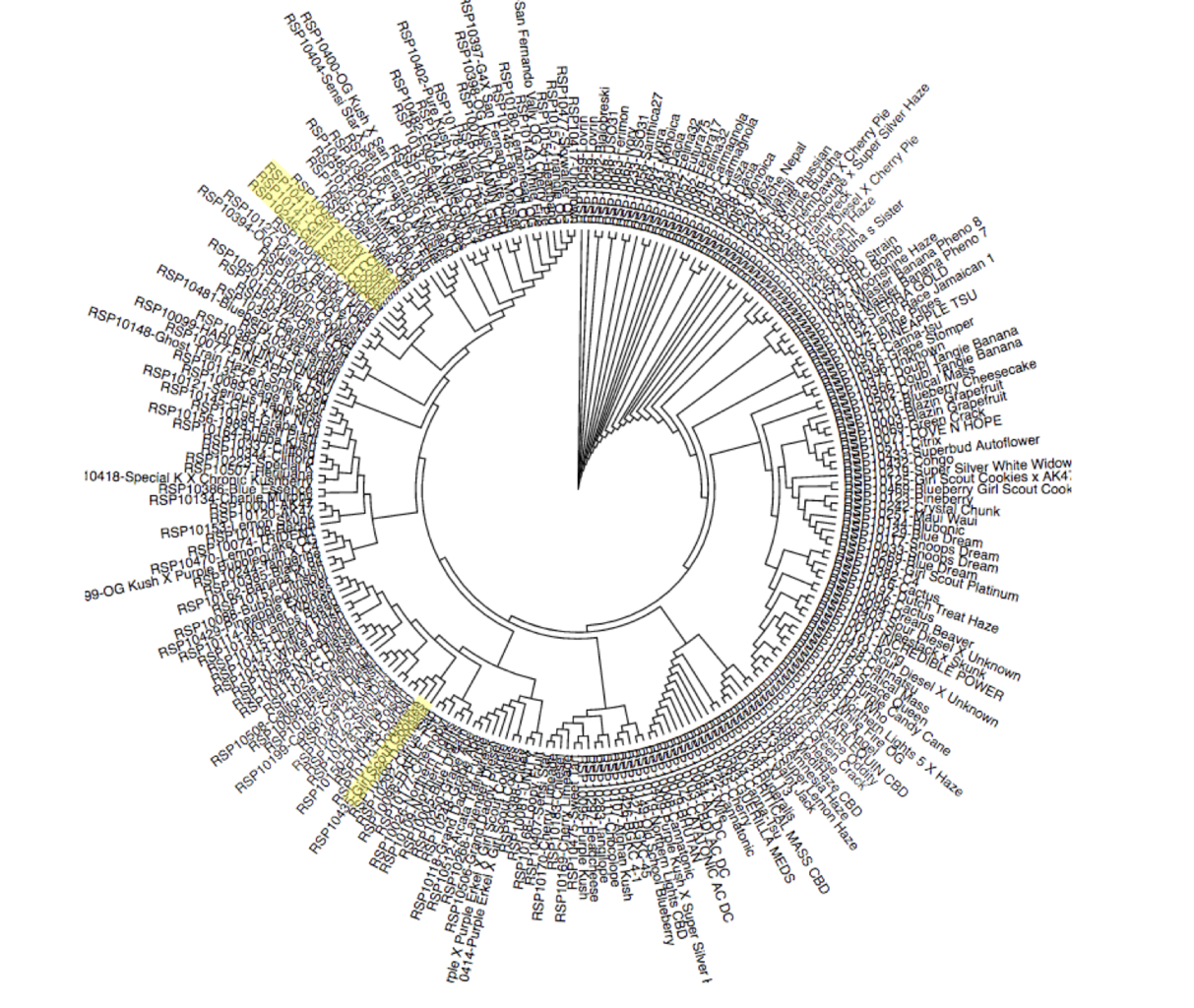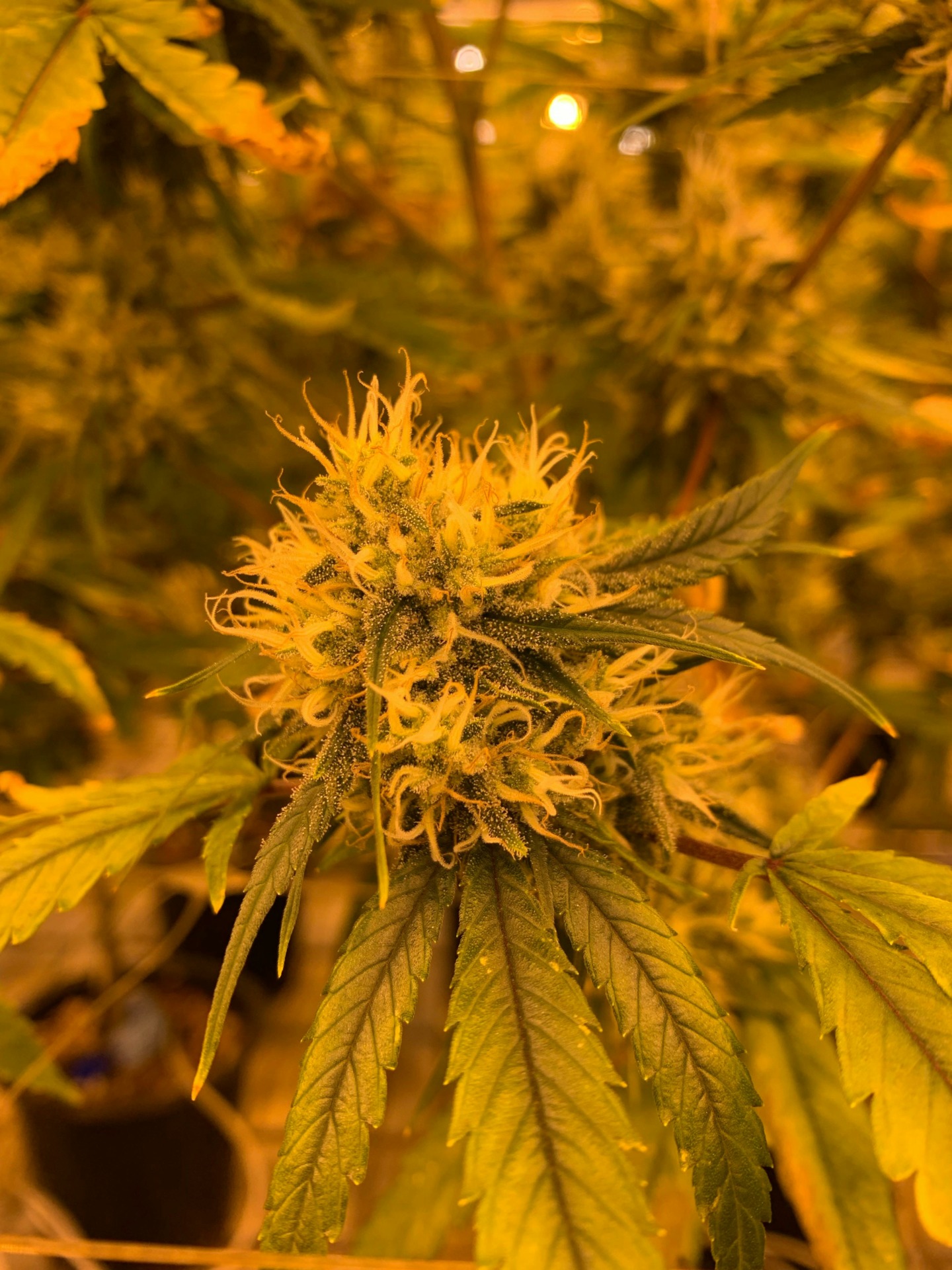The Strain Name Game
Different cannabis strains produce different chemical profiles, which can significantly alter the effects consumers or patients experience. To differentiate the types of strains in the market, the cannabis industry relies on strain names, which breeders dream up when they create a new strain.
Whether it be from personal experience or reading reviews on websites like Leafly or WoahStork, patients have come to associate specific effects and chemical profiles with certain strains. For example, Blue Dream is listed among as one of the world’s most popular strains, and it is often described as, “a sativa-dominant hybrid” that “balances full-body relaxation with gentle cerebral invigoration”.
When patients purchase Blue Dream from a dispensary, this is the experience they expect. That expectation is important because patients who consistently use cannabis to treat a condition require a consistent effect. However, how certain can patients be that the Blue Dream they purchased in their local dispensary is the same as the strain described online? Or how certain can they be that the Blue Dream that is on the shelf at their local dispensary is the same as the Blue Dream across town?
It turns out, they can’t be very sure.
Using Genetics to Identify Strains
Medicinal Genomics has genetically sequenced hundreds of cannabis strains grown in a number of states using our StrainSEEK™ Strain Identification and Registration service. With this service we extract DNA from cannabis plant material and obtain a unique DNA fingerprint for each strain. We then submit that information to the BitCoin Blockchain to serve as a public proof of existence record that growers can use to protect their intellectual property.
Part of the StrainSEEK process includes mapping the strains onto a phylogenetic tree that visually displays the relationships between the strains and calculates their genetic distance. Genetic distance is a number that is used to show the relative similarity between two genomes. The lower the number, the closer the relationship.
That information is made publically available on kannapedia..
Same Name, Different Strain
When we receive two or more samples from different growers with the same strain name, we sometimes see interesting results.
For example, we have sequenced three different Blue Dream samples from growers in three different states (California, Colorado, and Nevada. The samples from Colorado and Nevada are genetically very similar, with a genetic distance under 2. However, the sample from California is not similar at all, and it’s genetic distance from the others is greater than 8. You can see this on the phylotree below. The Colorado and Nevada strains are at about 3 o’clock on the tree, while the California samples is closer to 7 o’clock. Strains that have a large genetic distance are more likely to have different cannabinoid and terpenoid ratios, which could produce a very different effect for patients.

We see another example of this with Girl Scout Cookies, another very popular strain. We obtained four samples of Girl Scout Cookies from four different growers in three different states (one from California, two from Colorado (1,2), and one from Nevada). The three samples from California and Colorado are all very closely related, with genetic distances within 1.40. However, the genetic distance between the Nevada sample and the other three is approximately 8. You can see this on the tree image below. The closely related strains are at 11 o’clock, and the outlier is around 7 o’clock. Again, it’s likely the Nevada version of Girl Scout Cookies will produce a different effect than the other samples.

Same Strain, Different Name
Another interesting observation happens when two or more strains from different growers have different names, but are essentially genetically identical. For example, we obtained a sample of Space Oddity from California that is very similar to a strain called Green Crack that is grown in Colorado (genetic distance is 1.8).
We also sequenced a sample of Snoop’s Dream from Washington that is nearly identical to the two Blue Dream samples we discussed earlier that were grown in Colorado and California (genetic distances within 1.05).
What Does This All Mean?
This means that patients and consumers can’t rely on strain names to guide their decision about which cannabis products to purchase, especially if they are purchasing cannabis from a different dispensary. There is no guarantee that the Girl Scout Cookies they bought from their local dispensary is the same as what is being sold under the same name in another state, or perhaps even across town.
FOLLOW US ON FACEBOOK & INSTAGRAM
To solve this problem, genetic sequencing will be able to establish consistency with strain naming by establishing a genetic fingerprint for popular strains, such as Girl Scout Cookies. This fingerprint could become the standard to which all strains that claim to Girl Scout Cookies are measured, and only strains with a genotype that matches the established standard will be considered the real Girl Scout Cookies.
In time, the cannabis industry may need to move away from traditional strain names altogether and adopt a new naming system that will use genetic markers from the plant’s DNA to create an entirely unique naming system.
RELATED: THE 5 MOST POPULAR CANNABIS STRAINS
Genetic sequencing technology is already being applied to ensure strain consistency. The Veterans For Cannabis Foundation (VFCF) partner growers will register the genetic fingerprint of the cannabis strains that go into VCFC’s branded cannabidiol (CBD) products.
“With MGC’s StrainSEEK program we are able to take some of the guess work out of cannabis treatment in our veteran community,” said Joshua Littrell, founder of Veterans For Cannabis Foundation. “VFCF will now be able to replicate and reproduce the experience for veterans in our program. Our veterans are begging for a treatment they can trust and that is uniform. Now they can rest assured knowing they are receiving the same treatment every time.”
If you are new to cannabis and want to learn more, take a look at our Cannabis 101 post. HelloMD can help you get your medical marijuana recommendation; it’s 100% online, private and efficient.
We welcome Medicinal Genomics as our latest HelloMD guest blogger. Medicinal Genomics brings DNA technology expertise to cannabis.
They use state-of-the-art DNA technology to better understand cannabis genetics and develop products that help growers, dispensaries, and testing laboratories ensure the safety and quality of cannabis. In their first post they discuss the importance of origin and genetics for the strains you find in your local dispensary.





